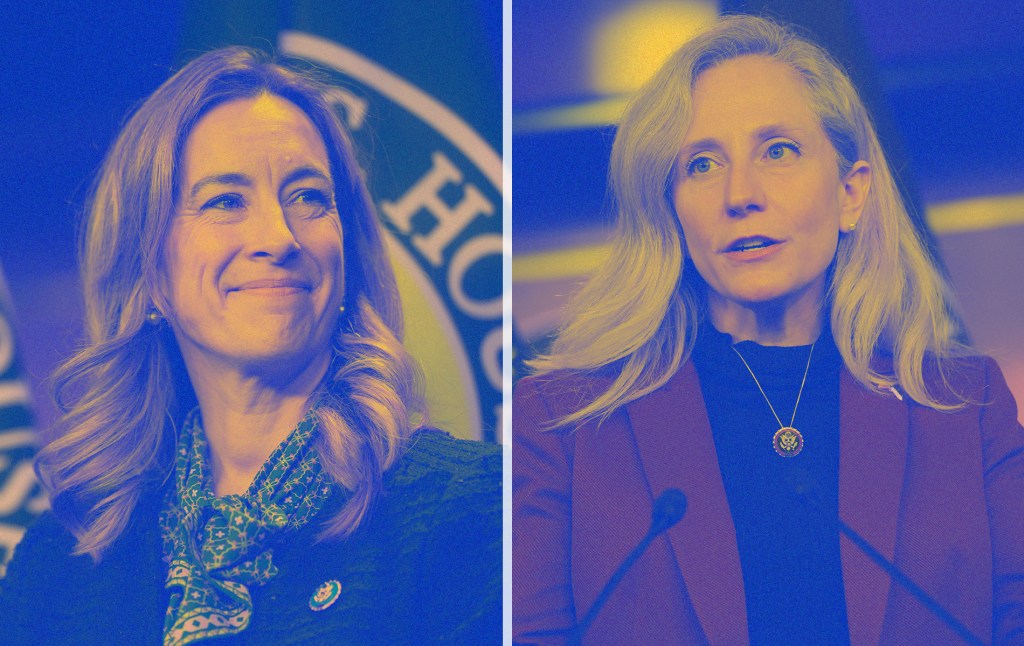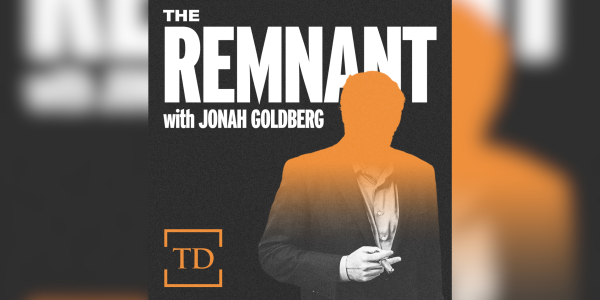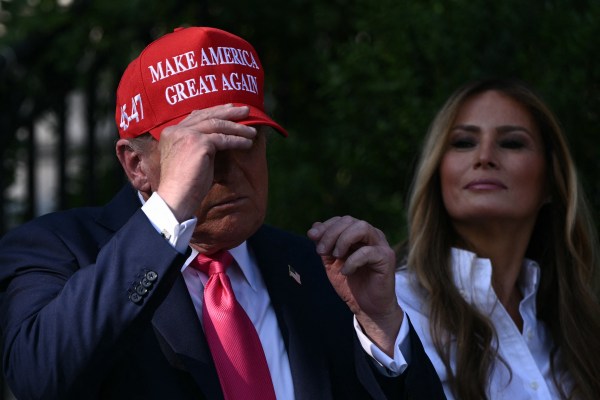Democratic voters have chosen a couple of pragmatic suburban military women to kickstart the party’s recovery in this year’s key off-year gubernatorial elections in New Jersey and Virginia. Their elevation is notable as it follows a broad-based 2024 rejection that many Democrats blame on left-wing activists with too much power over their affairs.
In New Jersey, U.S. Rep. Mikie Sherrill won the Democratic nomination for governor last week, and will face Republican former state legislator Jack Ciattarelli in November. And with no opposition in Tuesday’s Democratic primary in Virginia, former congresswoman Abigail Spanberger is a shoo-in to lead her party’s ticket against Republican Lt. Gov. Winsome Earle-Sears. Sherrill and Spanberger are remarkably similar, suggesting Democratic voters might have reached an initial consensus about the best path forward, even as chaos and indecision reign among party activists, politicians, and political professionals.
Sherrill, 53, represents a suburban district in northern New Jersey, is the mother of four teenagers, and was previously a Navy helicopter pilot. Spanberger, 45, held a suburban district anchored in Richmond before retiring last year, has three children, and is a former clandestine officer in the Central Intelligence Agency. Both are stylistic moderates, focusing primarily on kitchen table issues—most often “affordability”—while only occasionally highlighting plans to oppose President Donald Trump.
It’s the exact opposite approach taken by then-Vice President Kamala Harris in her presidential race against Trump last year—ditto then-President Joe Biden before her. Both concentrated heavily on Trump, declaring him a threat to American democracy (Harris labeled the president a fascist). True or not, more voters responded to Trump’s focus on their priorities: inflation and public safety. Some veteran Democratic operatives are hopeful the elevation of Sherrill and Spanberger signals the party is abandoning cultural catharsis and returning to what works.
“We’re suicidally empathetic,” Democratic strategist Dane Strother told The Dispatch. “Until we become more pragmatic, we’re going to be making points but not making a difference—and that’s the bottom line.”
Superficially, New Jersey and Virginia might look like easy pickings for the Democrats. The Garden State is perennially blue, voting Democrat for president and U.S. Senate since 1992 and 1978, respectively, while sparingly supporting Republicans for governor. The Old Dominion hasn’t voted Republican for president or U.S. senator since 2004 and 2002, respectively, and Northern Virginia is home to thousands of current and former U.S. government employees experiencing financial hardship because of the Trump administration’s effort to slash the federal workforce.
But looks can be deceiving.
In 2021, now term-limited New Jersey Gov. Phil Murphy became the first Democratic chief executive to win reelection in 40 years. It’s been even longer since Democrats have won the governor’s mansion in three consecutive elections. Meanwhile, polls this year have shown a general unease with the direction of a state government fully controlled by Democrats. Additionally, Trump performed 10 percentage points better there in 2024 than in 2020, making gains with critical voting blocs, including Hispanics.
In Virginia, Republicans have remained competitive in contests for the state Legislature and in gubernatorial races, winning in 2009 and 2021, when Gov. Glenn Youngkin led a GOP sweep of all constitutional offices. Critically, Youngkin remains in good standing with voters and might be favored for reelection if not for the commonwealth’s prohibition against governors serving consecutive terms. Indeed, where Republicans are preparing to make the case for change in New Jersey, their Virginia strategy revolves around urging voters to support Earle-Sears to continue Youngkin’s legacy.
Over the years, Virginia’s gubernatorial contest, and sometimes New Jersey’s as well, has foreshadowed the outcome of the subsequent year’s national midterm elections.
In 2009, Republicans Bob McDonnell and Chris Christie were elected governors of Virginia and New Jersey, respectively (Christie ousted incumbent Democrat Jon Corzine). The following year, Republicans won control of the House of Representatives, gaining 63 seats, while flipping seven Senate seats. In 2017, Democrat Ralph Northam was elected Virginia governor, defeating Republican Ed Gillespie. The following year, Democrats flipped 40 House seats and reclaimed the speaker’s gavel. In 2021, Youngkin’s victory was fueled by a suburban backlash against pandemic-era school closures and other onerous education regulations. Republicans recaptured the House 12 months later.
To get the pendulum swinging in the Democrats’ direction in the second midterm election under Trump, Sherrill and Spanberger are prosecuting similar campaign strategies, focusing on quality-of-life issues and sometimes wonky statewide matters. Trump, and how they’ll use their office to thwart objectionable White House policies, is discussed sparingly.
In Sherrill’s case, that means prioritizing what she likes to refer to as “the last issue keeping you up at night.” Based on what the congresswoman is hearing from voters, that’s likely to be addressing economic anxiety about housing and energy costs, not to mention complaints about public transit. As for the all-politics-is-local aspect of her campaign, look for Sherrill to do what she’s done as a federal lawmaker: focus on issues like flood mitigation, funding for law enforcement, and transportation infrastructure.
“She believes that Democratic governors are more important than ever. It’s where we can take a stand and win—not just standing up to Trump but also delivering on the economy and really delivering on lowering costs for people,” Sherrill campaign spokesman Sean Higgins said.
The Spanberger campaign’s messaging thus far reveals a similar approach.
Of the 22 press releases issued in June through Monday, all but two highlighted Spanberger’s plans to reduce housing and energy costs, promote local development and job growth, fight Trump administration proposals to move federal jobs out of Virginia, and tackle homelessness. Because the commonwealth’s economy is so intertwined with the federal government, many of these issues often intersect with concerns about Trump’s leadership. One such overlap is the cuts to the federal workforce spurred by Trump’s ad-hoc Department of Government Efficiency.
But Spanberger is likely to spend more time talking about the underlying problems that she and voters believe Trump caused rather than criticizing the president personally, something she generally views as a waste of time.
“Abigail has been relentlessly clear as she travels the Commonwealth that she is not only ready to stand up to the harm caused to Virginia by the Trump Administration, but that she has a proactive gameplan to lower costs, strengthen schools, and deliver tangible results that improve Virginians’ lives,” her campaign spokesman, Connor Joseph, said in a statement provided to The Dispatch.










Please note that we at The Dispatch hold ourselves, our work, and our commenters to a higher standard than other places on the internet. We welcome comments that foster genuine debate or discussion—including comments critical of us or our work—but responses that include ad hominem attacks on fellow Dispatch members or are intended to stoke fear and anger may be moderated.
With your membership, you only have the ability to comment on The Morning Dispatch articles. Consider upgrading to join the conversation everywhere.